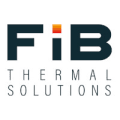HCl pickling process: how to reduce water consumption in the rinsing bath

Saving water during wire pickling processes is a key step to sustainability: show your fellow customers that you care about the planet.
FIB has developed a configurable high-performance rinsing bath that can be easily installed on existing hydrochloric acid pickling baths to achieve a more sustainable process.
This new design can cut off the rinsing water consumption by 2 to 3 times for wastewater treatment. After heat treatment and before galvanizing, wires are pickled in a hydrochloric acid bath to remove oxides, then they are rinsed in water through cascade rinsing to achieve maximum efficiency and minimum water consumption.
By using the water rinsing unit, it is possible to obtain the following results:
- 3 times less water consumption;
- 3 times less volume to neutralize in the wastewater plant.
The example chart shows the huge reduction in the water consumption, about 864 m3 in a month, up to 9500 m3 per year.
Thanks to the FIB's wire pickling unit design, you could reduce waste, consumption and work in a more environmentally friendly way. The system can be easily integrated into your wire pickling unit and the pay-back is extremely fast, so make sure to invest in water-saving units.
For more information and examples on the water savings that can be achieved, please read the full article at this link >>



